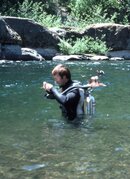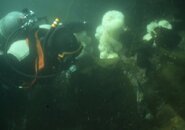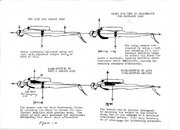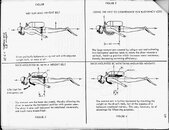I dove Ron's new Bi-fin prototypes yesterday.....And I have to say WOW!
They are faster than my DiveR's when I want to go "scooter cruising speeds"...and when I want to go medium speed or slow, they feel very comfortable.
They are best at flutter and dolphin, obviously with their heritage....but Frog kick just fine....not quite as good as Dive R's( which frog kick as well or better than jet fins) and Ron's fins Helicopter turn well....Reverse kick will require me to develop a different kick shape....which is something I had to do with the DiveR freedive fins also....Ron's fins are different enough, so that I can't use the same kick shape I am used to for reverse kick, so at some point when I have more time, I'd see about what angles and articulations work the wing technology blade better for this.
I see these fins for hunters, or videographers, or even photographers doing wide angle of large marine life.
I spent some time following Sandra while she was doing a macro dive at the BHB with these, and going dead slow or hovering was very precise with them...It would be nearly impossible for a decent diver to silt with them. You would have to really try and do something stupid. But I don't see macro divers , or divers that insist on swimming as slowly as they can, wanting Ron's tech, or even freedive fin tech. They just won't use it.
All in all, this is a fin I want to add to my "Golf-bag" of fins....and hope to in the near future. There are a lot of dives where this would be the "right club" for me

Today, the plan is to do some freediving with Ron, and I will be using the bi-fin with the extra stiff bade attachment....just to see if there is a benefit with this. As of this moment, we will do either the BHB, the pump house, or possible go out on Keylypso with Jim Abernethy....will know in a couple hours if anyone wants to join us








